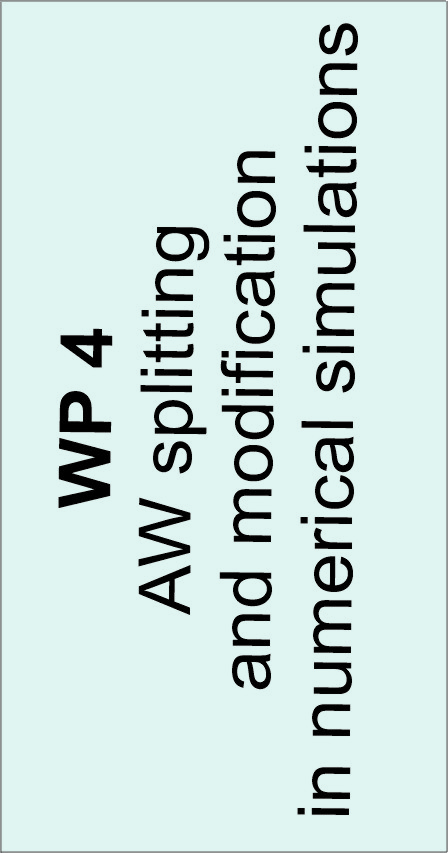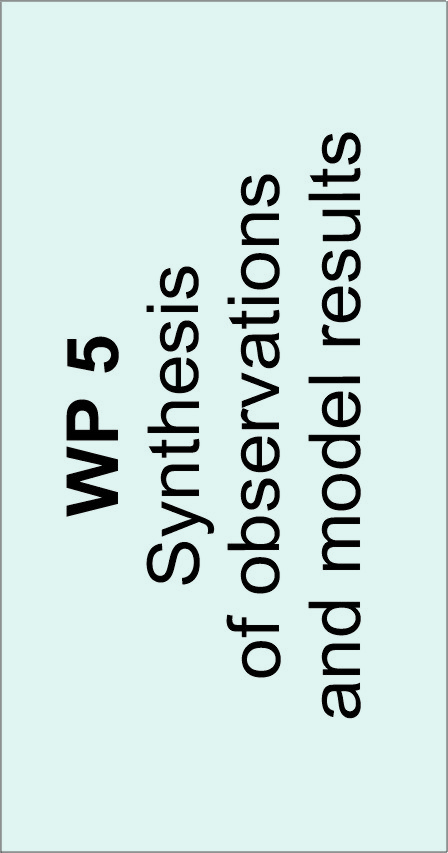





Click on the picture to see more...
|
Task 1.1 Operational project management including reporting (IOPAS). Task 1.2 Financial and administrative project management (IOPAS, designated project officer). Task 1.3 Project data management (IOPAS with input from partners). Task 1.4 Dissemination of project results and public outreach (IOPAS with contributions from all partners). Task 2.1 Collect and analyze available historical data from different sources to describe the variability of AW properties in the WSC on different time scales (IOPAS). Task 2.2 Obtain spatial distributions of the Atlantic Water properties and estimate transport in the WSC from dedicated ship-borne hydrographic measurements during three PAVE summer campaigns (IOPAS). Task 2.3 Describe transformations of the Atlantic water on the way through Fram Strait into the Arctic Ocean on a basis of the hydrographic sections and time series from moored arrays in Fram Strait and north of Svalbard. Run the inverse model FEMSECT to obtain better estimates of the volume and heat transport through Fram Strait (IOPAS). Task 2.4 Recognize the role of atmospheric and buoyancy forcing in interannual variability of the AW transport in Fram Strait. Estimate an influence of mesoscale eddies on the AW recirculation on the basis of available in situ observations and remote sensing data (IOPAS). Task 3.1 Collect and analyze available historical data from different sources to describe the variability of AW properties in the Barents Sea (IMR). Task 3.2 Describe transformations of the Atlantic water on the way through Barents Sea on a basis of the hydrographic sections and time series from moored arrays in BSO (IMR). Task 3.3 Investigate the role of wind and buoyancy forcing on the Atlantic Water transport to the Barents Sea (IMR). Task 3.4 Investigate the net effect of tidally induced topographic waves on the Atlantic Water transport to the Barents Sea (IMR). Task 4.1 Analyze existing ocean model hindcast runs and their atmospheric forcing to quantitatively describe the variability in the AW branches (IMR). Task 4.2 Perform high resolution coupled physical-biological model to estimate primary production in Fram Strait (NERSC). Task 5.1 Carry out a time-lagged regression analysis of observed oceanic and cryospheric variables and atmospheric reanalysis data to verify already known, and possibly identify not yet known links of the intraseasonal-to-decadal variability in hydrographic properties and heat and volume transport in different branches of the Atlantic water flow towards the Arctic Ocean to sea ice and atmospheric variability in the Nordic Seas region (IOPAS with IMR input). Task 5.2 Based on the results from Task 5.1 and input from available numerical model data, build up a conceptual model of recent climate interactions between the atmosphere, sea ice, and ocean in the Nordic Seas region (IOPAS with IMR input). Task 5.3 Investigate if/how on/off Ekman transport over the northern Barents Sea Banks induces co- variability of the AW branches (IMR). Task 6.1 Analyze available time series (1977-2012) of temperature in the Fram Strait and Barents Sea branches in relation to the European Arctic ice-cover (IMR). Task 6.2 Estimate variability of primary production in Fram Strait using the high resolution coupled physical-biological model, in situ observations and remote sensing (NERSC). Task 6.3 Compare taxonomic composition and abundance of zooplankton of the two main pathways of the Atlantic Water inflow into the Arctic Ocean as well as to assess the changes in zooplankton communities in relation to variability in AW advection (IOPAS, IMR). Task 6.4 Investigate the impact of varying AW flow on biodiversity aspects (species composition) and the development of Calanus species (C. glacialis, C. finmarchicus) (IOPAS, IMR). |
